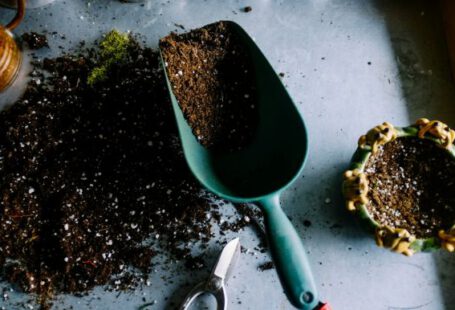Spring is a time of renewal and growth, and this applies not only to flowers and plants but also to our lawns. After a long, cold winter, our lawns need some tender loving care to help them flourish throughout the spring and summer months. One crucial aspect of lawn care is applying the right treatments at the right time. In this article, we will explore the lawn treatments that should be applied in spring to ensure a healthy and vibrant lawn.
Soil Testing: The Foundation of Great Lawns
Before diving into specific treatments, it is essential to start with a soil test. Soil testing provides valuable insights into the nutrient levels and pH balance of your soil. This information is crucial in determining the treatments your lawn needs to thrive. By understanding your soil’s composition, you can make informed decisions about fertilizers and amendments to achieve optimal results.
Pre-Emergent Herbicides: Keeping Weeds at Bay
As the temperature rises, so does the likelihood of weeds sprouting up in your lawn. Applying pre-emergent herbicides in the spring can help prevent the germination of weed seeds, keeping your lawn weed-free. It is crucial to apply pre-emergent herbicides before the weeds start to grow, so timing is key. Follow the instructions on the product label for the best results.
Fertilization: Feeding Your Lawn
Spring is an excellent time to give your lawn a nutrient boost after the long winter months. Fertilizers provide essential nutrients like nitrogen, phosphorus, and potassium that promote healthy growth and vibrant color. Choose a slow-release fertilizer to ensure a steady supply of nutrients over time, and be sure to follow the manufacturer’s instructions for application rates.
Aeration: Letting Your Lawn Breathe
Over time, the soil in your lawn can become compacted, making it difficult for water, air, and nutrients to reach the grass roots. Aeration is the process of creating small holes in the soil to alleviate compaction and promote better root growth. Spring is an ideal time for aeration, as the grass is actively growing, and the holes created allow for better absorption of water and nutrients.
Overseeding: Thicker, Fuller Lawns
If your lawn has thin or bare patches, overseeding can help fill in those areas and promote a thicker, fuller lawn. Choose a high-quality grass seed that is suitable for your region and lawn conditions. Before overseeding, make sure to prepare the soil properly by loosening it and removing any debris. Water the newly seeded areas regularly to encourage germination and establishment.
Watering: Hydration is Key
Proper watering is crucial for maintaining a healthy lawn. In spring, the weather can be unpredictable, so it’s essential to pay attention to the moisture needs of your lawn. Water deeply and infrequently to encourage deep root growth and avoid shallow root systems. Adjust your watering schedule based on rainfall and the specific requirements of your grass type.
Mowing: The Right Height
Mowing is an essential part of lawn maintenance, and it becomes even more critical in the spring. Set your mower blades to the appropriate height for your grass type, ensuring you do not remove more than one-third of the grass blade at a time. Mowing too low can stress the grass and make it more susceptible to weeds and diseases.
In conclusion, spring is a crucial time for lawn treatments to set the stage for a healthy, vibrant lawn throughout the year. From soil testing to pre-emergent herbicides, fertilization to aeration, and overseeding to proper watering and mowing, each treatment plays a vital role in maintaining a beautiful lawn. By following these spring lawn care practices, you can enjoy a lush, green lawn that will be the envy of the neighborhood.





